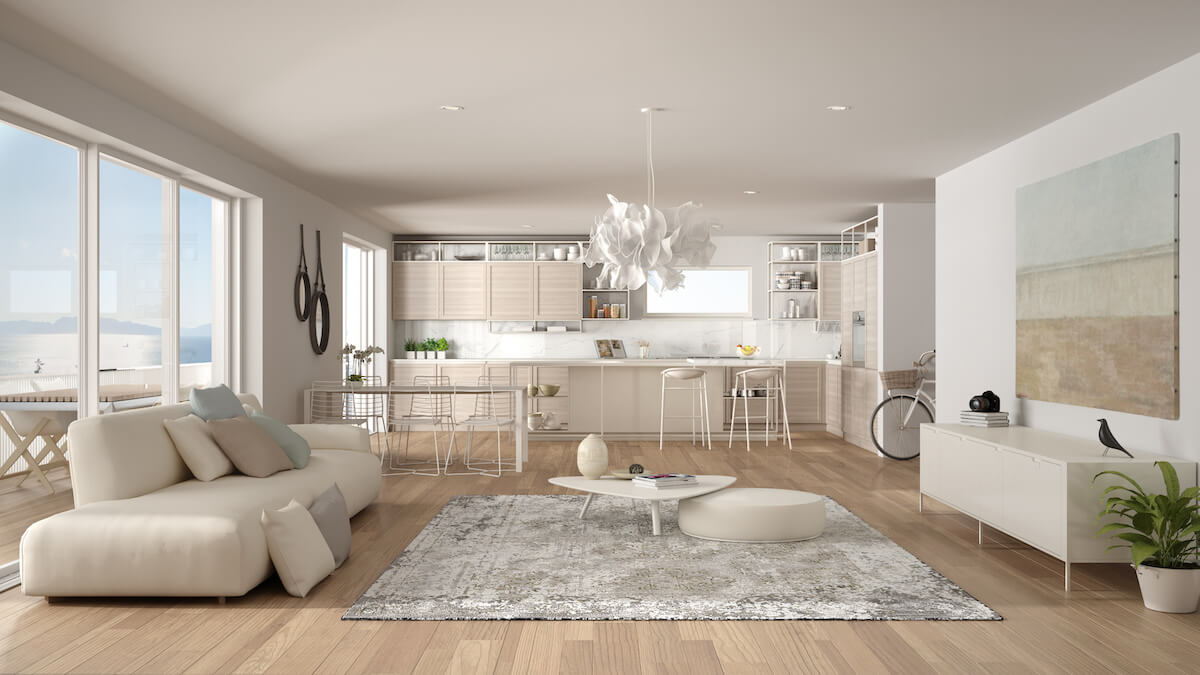All Categories
Featured
When it involves making and equipping your home, choosing the appropriate design of furnishings is one of one of the most important choices. Two prominent selections are contemporary and traditional furniture styles. While they might share some similarities, they vary in various ways, from style elements to materials and overall appearances. Comprehending the vital differences between these two styles can aid you make an educated selection about what will ideal suit your home and individual preference.
Conventional Furnishings: Standard furnishings, on the other hand, attracts motivation from past historical periods, such as the 19th and 18th centuries. Standard furnishings often tends to have a more official look, and its layout is rooted in history, often with complex patterns, elegant contours, and antique surfaces.
![]()
Typical Furniture: Typical furnishings is recognized for making use of rich, all-natural products like solid timber, leather, and textiles. Wood furniture pieces, typically made from oak, cherry, mahogany, or walnut, are common in conventional styles. The surfaces often tend to be darker and a lot more refined, with elaborate woodwork and elegant detailing. Upholstery is frequently made from elegant textiles like velour, silk, or brocade, which add to the extravagant feel of typical styles. The products in traditional furniture are usually more considerable and made to last for generations.
![]()
Typical Furniture: Typical furnishings, by contrast, frequently includes richer, much deeper color tones. Patterns such as flower prints, damask, and stripes are common in standard furnishings pieces, adding a component of style and appeal.
![]()
Conventional Furniture: While traditional furnishings also values comfort, the emphasis is more on creating a timeless and extravagant allure. The pieces are usually developed with longevity and craftsmanship in mind, suggesting they often tend to be heavier and much more significant. Comfort is focused on, especially in seating items such as chairs and couches, but typical furniture does not always stress the flexibility or performance that prevails in modern items. The emphasis is extra on visual allure and the splendor of materials and design.
Traditional Furniture: Traditional furnishings is best suited for homes that welcome a more traditional, formal style. While it can be blended with modern-day aspects, traditional furniture has a tendency to dominate the room and is often the focal factor.
Conclusion. Ultimately, choosing in between contemporary and standard furnishings comes down to your individual choices and the total vibe you wish to develop in your space. Contemporary furnishings provides smooth, minimal layouts and capability, while typical furniture brings ageless elegance, detailed craftsmanship, and a cozy, welcoming feel. Whether you're attracted to the clean lines of contemporary furnishings or the classic appeal of conventional pieces, both designs offer distinct benefits that can boost your home's visual. The key is to stabilize your preferences with the details needs and area of your home to produce a harmonious, comfy living setting.
- Design and Aesthetic. Contemporary Furniture: Contemporary furnishings is all regarding clean lines, minimalist layouts, and an emphasis on functionality. Contemporary furniture tends to have actually an underrated elegance, with much less emphasis on embellishment.
Conventional Furnishings: Standard furnishings, on the other hand, attracts motivation from past historical periods, such as the 19th and 18th centuries. Standard furnishings often tends to have a more official look, and its layout is rooted in history, often with complex patterns, elegant contours, and antique surfaces.
- Materials and Finishes. Contemporary Furniture: In contemporary layout, materials tend to be much more varied and modern. Furnishings made from metal, glass, and plastics are generally utilized, usually combined with timber to create contemporary and smooth pieces. The surfaces are frequently more minimalistic and might include matte, glossy, and even reflective surfaces. The emphasis is on creating a trendy, modern-day look that fits effortlessly right into present living areas. Furniture might also include brand-new products, such as acrylic or molded plywood, which provide a cutting-edge allure.

Typical Furniture: Typical furnishings is recognized for making use of rich, all-natural products like solid timber, leather, and textiles. Wood furniture pieces, typically made from oak, cherry, mahogany, or walnut, are common in conventional styles. The surfaces often tend to be darker and a lot more refined, with elaborate woodwork and elegant detailing. Upholstery is frequently made from elegant textiles like velour, silk, or brocade, which add to the extravagant feel of typical styles. The products in traditional furniture are usually more considerable and made to last for generations.
- Shade Palettes. Contemporary Furnishings: Contemporary furniture welcomes neutral color schemes, such as shades of gray, white, black, and beige. Strong accents and pops of shade are typically made use of to develop centerpieces, either through throw pillows, art work, or carpets. The focus gets on developing a well balanced, harmonious setting without frustrating the area with way too many contending colors. The overall impact is clean, streamlined, and modern-day, with color made use of strategically to boost the aesthetic.

Typical Furniture: Typical furnishings, by contrast, frequently includes richer, much deeper color tones. Patterns such as flower prints, damask, and stripes are common in standard furnishings pieces, adding a component of style and appeal.
- Capability and Convenience. Contemporary Furnishings: Capability is a vital function of modern furniture. Contemporary furniture typically features integrated storage services, multi-functional pieces, and ergonomic designs, making sure that both type and feature are well balanced.

Conventional Furniture: While traditional furnishings also values comfort, the emphasis is more on creating a timeless and extravagant allure. The pieces are usually developed with longevity and craftsmanship in mind, suggesting they often tend to be heavier and much more significant. Comfort is focused on, especially in seating items such as chairs and couches, but typical furniture does not always stress the flexibility or performance that prevails in modern items. The emphasis is extra on visual allure and the splendor of materials and design.
- Style Integration. Contemporary Furnishings: Contemporary furnishings works well in modern homes, especially those with open-plan layouts. Its tidy, minimalist style is perfect for minimalist rooms or interiors that stress a more industrial, city, or Scandinavian look. Contemporary items can likewise blend effortlessly with various other design styles, such as mid-century modern, transitional, or even traditional, because of their versatile and ever-evolving nature.
Traditional Furniture: Traditional furnishings is best suited for homes that welcome a more traditional, formal style. While it can be blended with modern-day aspects, traditional furniture has a tendency to dominate the room and is often the focal factor.
Conclusion. Ultimately, choosing in between contemporary and standard furnishings comes down to your individual choices and the total vibe you wish to develop in your space. Contemporary furnishings provides smooth, minimal layouts and capability, while typical furniture brings ageless elegance, detailed craftsmanship, and a cozy, welcoming feel. Whether you're attracted to the clean lines of contemporary furnishings or the classic appeal of conventional pieces, both designs offer distinct benefits that can boost your home's visual. The key is to stabilize your preferences with the details needs and area of your home to produce a harmonious, comfy living setting.
Latest Posts
Don’t Miss Special Auto Repair Specials in Chicago at Montclare Auto Repair
Published en
1 min read
Safeguard Your Investment with Professional Gutter Installment
Published en
1 min read
Discover the Storied Past of Deauville Inn: From Speakeasy to Seafood Haven
Published en
2 min read
More
Latest Posts
Don’t Miss Special Auto Repair Specials in Chicago at Montclare Auto Repair
Published May 25, 25
1 min read
Safeguard Your Investment with Professional Gutter Installment
Published May 22, 25
1 min read
Discover the Storied Past of Deauville Inn: From Speakeasy to Seafood Haven
Published May 20, 25
2 min read